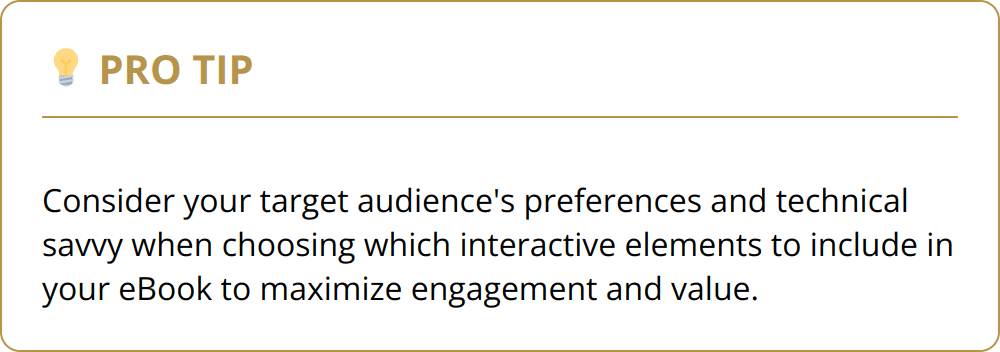At Beverly Hills Publishing, we understand the evolving landscape of digital publishing and the growing demand for engaging content. Interactive eBooks are at the forefront of this transformation, offering a dynamic way for authors to connect with their readers.
By integrating interactive features, writers can transcend traditional reading experiences, making every page a doorway to deeper understanding and engagement. Our latest post dives into the practicalities of bringing this innovation to life in your work.
Elevating eBooks with Interactivity
Interactive eBooks have revolutionized the way authors engage with their readers. By enriching your eBook with interactive elements, you can transform the reading experience into an immersive journey, fostering a deeper connection with your content. Here’s how to seamlessly integrate interactive features into your eBooks, ensuring every reader’s click adds value to their reading experience.
Embed Videos and Audio for a Rich Narrative
Multimedia elements like videos and audio clips can turn pages into multi-sensory experiences. For instance, embedding a short documentary clip within a history eBook can provide readers with a visual and auditory context, enriching their understanding of the period discussed. Meanwhile, audio clips of interviews or podcasts can add authenticity and depth to biographical or non-fiction works.
Actionable Tips:
- Use video and audio clips to explain complex ideas succinctly.
- Embed QR codes for longer videos to maintain eBook file size.
Quizzes and Assessments to Engage and Educate
Quizzes and self-assessment tools aren’t just for academic eBooks; they can add an interactive layer to any genre. By incorporating quizzes at the end of chapters, authors can help readers test their understanding and retention of the content. It’s an excellent way to make reading an active process, especially for self-help or instructional materials.
Practical Insights:
- Integrate end-of-chapter quizzes to reinforce key concepts.
- Use assessments to personalize the reading experience, allowing readers to track their progress.
Dynamic Data Visualization
Animated charts and infographics can bring data to life, making complex information easy to digest and visually appealing. Whether it’s showcasing market trends in a business eBook or displaying historical climate patterns in a science text, animated visuals can captivate readers’ attention and enhance comprehension.
Recommendations:
- Incorporate interactive charts to highlight trends or comparisons.
- Use infographics for summarizing information or storytelling.

In addition, you might find value in exploring innovative publishing technologies to further enrich your eBook’s interactivity. Also, considering the evolving landscape of digital content consumption, understanding digital book marketing trends can amplify your eBook’s reach and impact.
By thoughtfully incorporating videos, audio clips, quizzes, and animated visuals into your eBook, you not only elevate the reader’s experience but also set your work apart in the crowded digital landscape. This approach to digital publishing underscores the importance of adapting to and embracing technological advancements to meet and exceed reader expectations.
Balancing Content and Interactivity
Creating an engaging eBook requires a sophisticated blend of content and interactive elements that not only inform but also captivate the reader. Achieving this balance is not always straightforward, but it’s imperative for enhancing the reader’s learning experience and ensuring your eBook is compatible across a variety of eReading devices. Here are some practical strategies to effectively integrate interactive features into your eBooks.
Firstly, it’s essential to start with a clear understanding of your eBook’s purpose and audience. Not every book benefits from the same level of interactivity. A heavy academic text might not need pop-up trivia quizzes, but could greatly benefit from embedded videos explaining complex theories or data visualization to support research findings. Conversely, instructional or self-help eBooks might engage readers more effectively with interactive assessments or exercises.
Practical Integration Strategies:
- Identify key concepts in your eBook that could be enhanced with multimedia or interactivity. Is there data that could be better understood through an interactive chart? Could a video interview deepen the reader’s connection to the subject matter?
- Prioritize reader experience. Ensure each interactive element adds value without overwhelming or distracting from the core content. Ask whether the interactivity enhances understanding or engagement.
- Ensure device compatibility. Not all eReaders support the same interactive features. Consider widely used platforms and their capabilities. When in doubt, provide alternative text descriptions for essential interactive elements.
- Keep file size in mind. Rich media can significantly increase your eBook’s file size. Use external links or QR codes for larger multimedia files to keep the eBook lightweight and accessible.
- Continuously test your eBook on different devices throughout the development process. This ensures that all readers, regardless of their preferred device, have a positive and engaging reading experience.

Finally, consider the future of interactive eBooks. As technology advances, so too do the expectations of readers. Staying informed about the latest trends in eBook design and interactivity will help your content remain relevant and engaging. Explore tools and platforms that facilitate the creation of interactive eBooks and take advantage of their features to elevate your readers’ experience. For further insights into engaging your audience, the guide on enhancing your professional networking can provide additional strategies for authors looking to expand their impact.
By thoughtfully integrating interactive features that enrich rather than distract, you can create eBooks that are not only informative but also immersive. This not only sets your content apart but also builds a deeper connection with your audience by catering to diverse learning styles and preferences.
Designing for Engagement
To captivate and maintain the interest of readers in interactive eBooks, focusing on user-friendly design, comprehensive testing of interactive elements, and leveraging analytics for insights into reader behavior is essential. Here, we explore practical strategies that go beyond basic integration, aiming to provide an unrivaled reading experience.
Simplify Navigation
One of the key factors in designing interactive eBooks is ensuring that navigation remains straightforward. Complex or non-intuitive navigation can detract from the reader’s engagement, leading to frustration. Emphasize a layout that readers can navigate effortlessly. For example, a table of contents that links directly to sections or utilizing clear, interactive buttons for navigating between chapters can significantly enhance user experience.
Focus on Quality Testing
Before launching, it’s vital to test interactive features thoroughly to ensure they function as intended across various devices. Testing shouldn’t only be about functionality but also about assessing how these features contribute to the overall engagement with the eBook. Interactive elements that enhance understanding or provide valuable insights should be prioritized. Consider gathering a focus group or using beta testers to gain feedback on the interactivity’s effectiveness and engagement level.
Utilize Analytics for Insights
Understanding how readers interact with your eBook can offer valuable insights for future projects. Analytics can show which sections readers spend the most time on, which links are clicked the most, and where engagement drops off. This data is invaluable for refining and optimizing content. Tools like Google Analytics can be integrated into eBooks published on your website, providing a wealth of information about reader behavior.

.
- Key Takeaways:
- Navigation should be intuitive.
- Test functionality and engagement level of interactive elements.
- Use analytics to gather insights on reader behavior.
By emphasizing these aspects, authors can create interactive eBooks that are not only informative but also deeply engaging, encouraging readers to explore content more thoroughly. While integrating interactive elements is fundamental, ensuring these features are accessible, functional, and engaging takes your eBook to the next level of digital publishing.
Wrapping Up
Interactive eBooks represent a transformative leap in how authors connect with their audience. Integrating videos, audio clips, quizzes, and dynamic data visualization into eBooks turns passive reading into an active, engaging experience. This not only enhances the reader’s understanding but also significantly boosts their engagement with the material. For authors, embracing interactivity is not just about leveraging the latest digital tools; it’s about deepening the learning journey for their readers. It’s about offering a more captivating, immersive reading experience that stands out in a digital landscape crowded with content.

Yet, the inclusion of interactive elements should not overshadow the essence of high-quality content. The true value of an interactive eBook lies in its ability to merge enriching content with innovative features that together amplify the reader’s experience. This synergy between content and interactivity is crucial for creating eBooks that are not just informative but are truly memorable and impactful.
At Beverly Hills Publishing, we are pioneers in bridging the gap between traditional publishing and the dynamic world of digital content. We understand that the future of author success lies not just in the stories they tell but in how those stories are experienced by readers. By integrating strategic branding and marketing with our publishing efforts, we help authors not only share their messages but also transform their knowledge into engaging, transformative experiences.
In conclusion, the evolution of eBooks into interactive learning tools offers a realm of possibilities for authors to explore. It’s an opportunity to redefine what reading means in the digital age—to shift from merely consuming text to interacting with content in ways that enrich, educate, and entertain. As we look to the future, let’s embrace the potential of interactivity not as a novelty but as a powerful tool for deeper learning, engagement, and connection.















































































